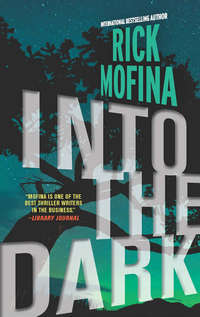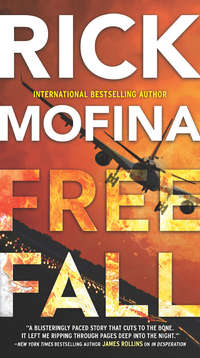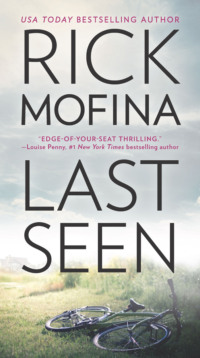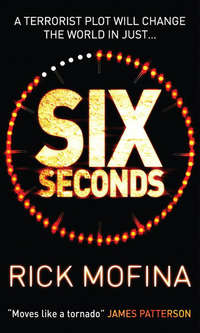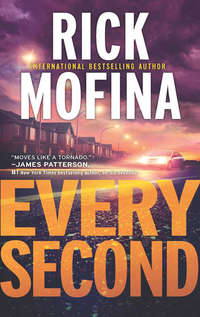
Полная версия
Full Tilt
Brennan let a few moments pass without answering.
“Mr. Vander, can you tell us about Mr. Nelson? What he does here, his character?”
“His character? You’re making me nervous.”
“Can you help us?”
“Carl’s been with MRKT about ten years. He’s a senior systems technician, a genius with computers. He helped design the upgrade for our security programs. He’s an excellent employee, very quiet and keeps to himself. I got nothing but good things to say about him. I’m getting a little worried.”
“Has he been under any stress lately?”
“No, nothing beyond the usual workload demands.”
“What’s his relationship status? Married, divorced, girlfriend, boyfriend?”
“He’s not married. I don’t think he has a girlfriend, or partner, whatever.”
Vander repositioned himself in his chair.
“Do you know if he has any outstanding debts?”
“No, I wouldn’t know.”
“Does he gamble? Use drugs or have any addictions?”
“No. I don’t think— You know, I’m not comfortable with this.”
“Would you volunteer a copy of his file to us?”
“Not before I check with our human resources and legal people.” Vander’s mouse clicked. “I think you need a warrant.”
“That’s fine. Thank you for your help.”
Brennan and Dickson got up to leave.
“Wait,” Vander stood, his face whitened. “Would this have something to do with that story about the fire killing two people at the old cemetery?”
Brennan let a moment pass.
“Mr. Vander, we can’t confirm anything and we strongly urge you to keep our inquiries confidential.”
* * *
Later, as Dickson drove them from the center, he was frustrated at where things stood in the thirty-six hours since the fire was discovered.
They’d talked to Robbie and Chrissie, the two teens who’d called it in, and got repetitions of what they already knew.
“We’ve still got nothing on our Jane Doe. Nothing more on our John Doe—slash Carl Nelson. We’ve got his note, his truck. There’s no activity at his residence and he’s not at work. We know it’s him. This is a clear murder-suicide, Ed. When’re we going to get warrants and search his place for something to help identify the woman and clear this one?”
Brennan was checking his phone for messages.
“We’ll get warrants once we confirm his identity. Let’s go to the hospital. Morten wants to see us, maybe he’s got something.”
* * *
Morten Compton, Rampart’s pathologist, was a large man with a Vandyke who was partial to suspenders and bow ties.
He was pulling on his jacket when Brennan and Dickson arrived. His basement office in the hospital smelled of antiseptic and formaldehyde.
“Sorry, fellas, I got to get to Ogdensburg.” Compton tossed files into his briefcase. “I’m assisting the county with the triple bar shooting there and I got the double fatal with the church van and the semi in Potsdam.”
“So why call us over, Mort?” Brennan asked. “Have you made any progress with either victim in my case?”
“Some, but first you have to appreciate that confirming positive IDs will take time, given the condition of the bodies and the backlog my office is facing. My assistant is in Vermont attending a funeral. I’m arranging for help from Watertown.”
“So where are we on my double?”
“We’ve submitted dental charts for the female and male to local and regional dentists and dental associations. Toxicology has gone to Syracuse and we’ve submitted DNA to the FBI’s databank.”
“That’s it?”
“Well, I don’t think the male died in the fire.”
“That’s new. What’s the cause for him?”
“Possibly a gunshot wound to the head. I just recovered a round, looks like a nine millimeter. You need to find a gun at the scene, Ed.”
* * *
As they drove to the scene, Dickson raised more questions.
“So how does a dead man start a fire, Ed?”
“Maybe he didn’t start it. Or, maybe he tied her up, started it, then shot himself in front of her, leaving her to burn to death.”
“If he wanted to end things, like the note suggests, why not shoot the woman first? Make sure she’s dead?”
“Maybe he did and missed and we haven’t recovered the rounds yet. My gut tells me we’re just scratching the surface here, Paul.”
As Dickson shook his head in puzzlement, Brennan returned to the woman’s dying words.
There are others.
* * *
The bright yellow plastic tape surrounding the blackened remnants of the barn bounced in the midday breeze. Techs from Troop B’s forensic unit, clad in white-hooded coveralls and facial masks, continued their painstaking processing of the ruins.
Mitch Komerick, the senior investigator who headed the squad, brushed ash from his cheek as he pulled down his mask to meet Brennan and Dickson at the southwest corner of the line.
“Got your message on the update, Ed,” Komerick said.
“Find a gun?”
Komerick wiped the sweaty soot streaks from his face, then shook his head.
“No weapon and no rounds, or casings, so far.”
Brennan nodded and looked off in frustration.
“There are deep fissures where we found the male,” Komerick said, “big enough to easily swallow a gun. My money says that’s where it is. We’re going to put a drainpipe camera down there. We’re far from done.”
“All right.”
“My people have gridded the scene, and we’ll sift through every square inch of the property. We’ve sent the pickup down to the lab in Ray Brook for processing. The arson team says an accelerant, probably unleaded fuel, was used, so the fire was intentional.”
“Okay.”
“But we’ve got something to show you, something disturbing. Suit up.”
After Brennan pulled on coveralls, he followed Komerick and his instructions on where to step as he led him into the destruction. The smell of charred lumber and scorched earth was heavy. Some of the singed beams had been removed and stacked neatly to the side, revealing sections that had been processed. There was a heap of small machinery, now charred metal. Komerick pointed to the wreckage. “Look, these were livestock stalls that someone converted to small rooms, confinement cells.”
“How can you tell? It’s such a mess.”
“We found heavy doors with locks, metal shackles and hardware anchored in the walls and floors, remains of mattresses, at least half-a-dozen cells so far. Somebody was definitely using the place, possibly for porno movies, for bondage, for torture. God only knows, Ed.”
Brennan felt the hairs on the back of his neck rising.
“Mitch, over here!”
One of the forensic technicians was on his knees delicately brushing the ground with the care of an archaeologist. Another technician was recording it.
“Look,” the technician said while clearing the small object, “we can run this through missing persons databases and ViCAP.”
Rising from the grave of sooty earth and ash was a fine chain and a stylized charm of a guardian angel.
5
New York City
Kate Page, a reporter with Newslead, the global news service, blinked back tears as she consoled the anguished father, who she’d reached on his phone in Oregon.
The man on the line was Sam Rutlidge. His eleven-year-old son, Jordan, had vanished six years ago while walking to the corner store, two blocks from his home in Eugene, Oregon. Kate was writing a feature on missing persons across the country, on the toll cold cases exact on the families.
“I accept that he’s gone,” Sam said, “and before cancer took my wife, she told me she’d accepted it, too, that she’d see our boy in heaven. But I need to know what happened to him. Not knowing hurts every day, like an open wound that won’t heal, you know?”
Kate knew.
She underlined his words in her notebook, the quotes she’d use in her story. Her heart ached for Sam, a haunted trucker. She asked him a few more questions before thanking him for the interview.
After hanging up, Kate cupped her face in her hands and let out a long breath. Then she walked from her desk across the newsroom to the floor-to-ceiling windows where she looked at the skyline of midtown Manhattan.
It never gets any easier.
A part of her died each time she talked to a grieving mom or dad. It always resurrected her own pain. When Kate was seven years old her mother and father had died in a hotel fire. After the tragedy, Kate and her little sister, Vanessa, lived with relatives, then in foster homes. Two years after their parents’ deaths, Kate and Vanessa’s foster parents took them on a vacation. They were driving in the Canadian Rockies when their car flipped over and crashed into a river.
The images—hell, that moment in her life—were fused into her DNA.
The car sinking...everything moving in slow motion...the windows breaking open...the freezing water...grabbing Vanessa’s hand...pulling her out...nearing the surface...the icy current numbing her...her fingers loosening...Vanessa slipping away...disappearing... Why couldn’t I hold you? I’m so sorry, so sorry.
Kate was the only one who’d survived.
Her sister’s body had never been found. Searchers reasoned that it got wedged in the rocks downriver. Still, in her heart, Kate never gave up believing that Vanessa had somehow gotten out of the river.
Over the years, Kate had age-progressed photos of Vanessa made and submitted them with details to missing persons groups. She drew on her contacts with them, with police and the press, and she looked into open cases. But any leads always dead-ended.
It had become her private obsession.
Why was I the only one of my family to survive?
Wherever Kate went, she secretly looked into the faces of strangers who might now resemble her sister. For twenty years, Kate’s life had been a search for forgiveness.
I know it’s irrational, I know it’s crazy and I should just let it go.
But she couldn’t. It’s the reason she’d become a reporter.
“Kate, are we going to see your feature today?”
She turned to see Reeka Beck, Newslead’s deputy features editor, and her immediate boss, standing behind her.
Reeka was twenty-six years old, razor-sharp with degrees from Harvard and Yale. A rising star, she’d worked in Newslead’s Boston bureau and was part of the team whose collective work was a finalist for a Pulitzer.
Her thumbs blurred as she finished typing a text message on her phone, then she stared at Kate. Reeka’s cover-girl face was cool and businesslike while she waited for Kate to answer.
“Yes. It’ll be done today.”
“It’s not on the budget list.”
“It is. I put it on yesterday.”
“Has it got a news angle?”
“It’s a feature. We talked about this with—”
“I know we talked about it, but we’d get better pickup with a news peg.”
“I’m adding the latest justice figures on unsolv—”
“Maybe you could find a case police are close to solving.”
“I know how to write news—”
“Did you remember to arrange art for your story?”
Kate let the tense silence that passed between them scream her offense at Reeka’s condescending tone. She was forever curt, blunt and just plain rude, cutting reporters off when they answered her or dismissing their questions. Every interaction with her bordered on a confrontation, not because Reeka was ambitious and convinced she had superior news skills but rather, as the night editors held, because one of Newslead’s executives was her uncle and she could get away with it. Every newsroom Kate had ever worked in had at least one insufferable editor.
“Yes, Reeka, there’s art. The story’s on the budget. I’ll file it today, as noted in the budget, and I’ll insert the new justice stats.”
“Thank you.” Reeka pivoted while texting and left with Kate’s eyes drilling into the back of her head.
Be careful with her. This is not the time to make enemies. Kate walked back to her desk amid the newsroom’s cluttered low-walled cubicles. A number of those desks were empty, grim reminders that staff had been cut in recent years as the news industry continued bleeding revenues.
It was rumored Newslead would introduce a process to measure how many stories reporters produced and subscriber pickup rates of their work, against that of competitors like the AP, Reuters or Bloomberg.
Bring it on. Kate could go toe-to-toe with anyone.
She had proved that a year ago in a brutal job competition at Newslead’s Dallas bureau where she broke a story about a baby missing during a killer tornado. It’s why Chuck Laneer, a senior editor in Dallas, later offered her a job at Newslead’s world headquarters after he was transferred here to Manhattan.
Since then, Kate had led Newslead’s reporting, often beating the competition on coverage of serial killings, mall shootings, corruption, kidnappings, every kind of chaos that unfolded across the country or around the world.
Reporting was in Kate’s blood.
And for as long as she remembered she’d always battled the odds.
Her life had been a continual struggle for survival. She’d bounced through foster homes, spent her teen years on the street, taking any job she could get to put herself through college. She’d worked in newsrooms across the country and had a baby by a man who’d lied to her and written her off. Now here she was: a single mother who’d just turned thirty, and a national correspondent at one of the world’s largest news organizations.
Settling back into her desk, Kate’s heart warmed as she looked at Grace, her seven-year-old daughter, smiling from the framed photograph next to her monitor.
We’ve come a long way, baby. We’re survivors.
Less than an hour later, she finished her feature and sent it to the desk.
As she collected her things to leave, her phone rang.
“Newslead, Kate Page.”
“Kate, this is Anne Kelly, with the New York office of the Children’s Searchlight Network. Do you have a second?”
“Sure.”
“Fred Byfield, one of our investigators, said I should call. You’d asked that we alert you to any queries we get that may relate to your sister’s file, no matter how tenuous?”
Kate’s pulse quickened. “Yes, go ahead.”
“We wanted to give you a heads-up about a query we recently received from law enforcement.”
It sounded like the woman was reading from a message.
“All right,” Kate said.
“We were asked to check our files for a piece of jewelry concerning missing white women in their twenties.”
“But that’s routine.”
“It is, but in this case, Fred said that they’re asking about a necklace with a guardian angel charm.”
Kate froze.
Shortly before her death, Kate’s mother had given her and Vanessa each a necklace bearing a guardian angel charm. Kate had described the necklace in the file she’d submitted with missing persons organizations.
“Does it say anything about engraving or an inscription?”
“No.”
“Can you give me more details, Anne?”
“I can have someone call you.”
“Okay, but can you tell me anything more right now?”
“Well, we just got a message that the query went to our national office in Washington to run a search on the item, and, Kate, I’m sorry but it concerns a homicide.”
Kate slid down into her chair.
6
New York City
Kate’s express train barreled north out of Penn Station.
As she stared into the darkness, her mind raced, absorbing the call about the necklace.
Could it be Vanessa’s?
Contending with the ramifications and questions, she felt a knocking in her heart that turned into apprehension.
Stop it.
Vanessa’s dead. She died twenty years ago. Why do I put myself through this? Why do I cling to the hope that she survived? And now this: a homicide.
The subway platforms blurred by until Kate reached her stop. That’s when her phone rang. It was Nancy Clark, her neighbor, who watched her daughter.
“Hi, Kate, is this a bad time?”
“No. I’m just about home. Everything okay?”
“Oh, yes, Grace really wanted to talk to you.”
“All right, put her on.”
The sound of the phone being passed to Grace was followed by “Hi, Mom?”
“Hi hon. What’s up?”
“Mom, can I get my own phone?”
“Oh, sweetie.”
“But all my friends have phones.”
“I’ll think about it. I’ll be home soon. We’ll talk about it then.”
“Okay, Mom, love you.”
“Love you, too.”
Kate touched her phone to her lips and smiled.
What a kid.
Grace was her sun, her moon and the stars in her life. She’d taken to New York City like she was born here. She loved her school, her new friends, Central Park, the museums, everything about the city.
Kate treasured her job with Newslead, given her long road to get to this point. It had taken a little luck and a lot of hard work, but she’d turned a corner professionally and financially.
We’ve got a good life here. They lived in Morningside Heights in a Victorian-era building where she’d sublet an affordable two-bedroom apartment from a Columbia University professor who’d taken a sabbatical in Europe. While walking the few blocks home from the station, Kate checked for any updates from Anne Kelly at the Children’s Searchlight Network.
Nothing.
Kate picked up her mail in the lobby, the place where she and Grace first met Nancy Clark, a retired and widowed nurse who lived alone on the floor above them.
She was so kind and warm she had practically adopted Kate and Grace. They had each other over for coffee and Nancy quickly insisted she look after Grace whenever Kate worked or traveled. Now, outside Nancy’s apartment, Kate noticed the aroma of fresh baking before Grace opened the door.
“Hi, Mom! We made cookies!” Grace hugged Kate then went back to the kitchen table and collected a small tin and her backpack. “Nancy says I can take them home.”
“Okay,” Kate said. “Thanks for this, Nancy.”
“Anytime. We had fun. I’ll see you guys tomorrow.”
* * *
At home Kate and Grace each had a cookie while settling in before supper. As usual, Grace emptied her school backpack on the coffee table. Kate set aside the mail, fired up her laptop to review emails, then changed into jeans to prepare chicken tacos, rice and salad. Before setting the table, Kate checked her phone again.
Nothing from the Searchlight Network.
“Mom, did you think some more about my phone?” Grace asked while biting into her taco.
“Still thinking on it, hon.”
“Maybe we could look on your computer for a good one?”
“Not so fast, kiddo.” Kate smiled.
After supper, Kate helped Grace with her book report on Horton Hears a Who!
“Mom, who do you like better, the Cat in the Hat or Horton the Elephant?”
“Well, the Cat creates a lot of mischief whereas Horton tries to help people, so I guess Horton, for that reason.”
“The Cat’s a lot of fun, though.”
“Yes, but he leaves a big mess.”
Later, when Kate got Grace into the tub for her bath, Kate’s phone rang. The number was blocked. Kate left the bathroom door open and kept an eye on Grace, who was singing to herself as she splashed. Kate moved down the hall to take the call out of earshot.
“Hello?”
“Kate Page?”
She didn’t recognize the man’s voice.
“Yes, who’s calling?”
“Detective Ed Brennan, Rampart Police, Rampart, New York. I got your name and number from the flyer you’d submitted to the Children’s Searchlight Network.”
Kate caught her breath and tightened her grip on her phone.
“Yes.”
“My call concerns your listing of a necklace your six-year-old sister was in possession of when she was presumed to have drowned after an auto accident in Canada, twenty years ago.”
“Yes.”
“Could you go over the details of the necklace for me?”
“Now?”
“Yes.”
Kate cleared her throat.
“A month before our mother died, she gave Vanessa and me each a tiny guardian angel necklace with our names engraved on the charms. Vanessa wanted to trade them, so she wore the one with my name on it and I kept the angel bearing her name.”
“So, except for the engraving, they’re identical?”
“Yes.”
“Do you still have the other necklace?”
“Yes, I do.”
“I understand you live in New York City.”
“That’s right.”
Brennan paused as if to choose his words carefully.
“I know this would be very difficult, and I apologize for the imposition, but would you be willing to bring the necklace to Rampart to show us? It might help with an ongoing investigation.”
“Couldn’t I just send you a picture?”
“We’d prefer to see the actual necklace—we might have other questions.”
Kate’s stomach began tightening.
“Can you tell me more about the case, Detective?”
A few moments passed.
“This is confidential,” Brennan said.
“Of course.”
“We’ve found a necklace at a crime scene that fits with the description you gave. However, the engraving is unclear at this point. It’ll need further analysis because it was badly charred.”
“Charred?”
“Unfortunately, it was discovered in the remains of a fire at the scene of what appears to be a murder-suicide. We have a white female in her twenties deceased, who was burned beyond recognition. We’re doing all we can to confirm her identity.”
Kate put her hand to her mouth, then glimpsed her daughter happily playing in the tub.
“You say it’s a murder-suicide, what—what else can you tell me?”
“The male’s identity is also unconfirmed. We’ve not released many details to the public at this point. I am very sorry to put you through this. But we wouldn’t have imposed if we didn’t have reason to believe your cooperation might assist us. Will you be able to bring the necklace to Rampart?”
“Yes. Yes, I’ll be there with the necklace tomorrow.”
After hanging up, Kate got Grace to bed, then called Chuck Laneer’s cell phone. Although Reeka Beck was her immediate boss, and going over her head would create tension, Kate preferred to talk to Chuck about this. They had a good relationship going back to Dallas when she’d told him about Vanessa’s tragedy.
“That’s an incredible development for you, Kate,” he said when she filled him in. “I don’t see a problem with you taking a few days off to follow up. But to steer clear of any potential conflict, you’re not going up there as a Newslead reporter.”
“Right.”
“You’re going on your own cost and time, to follow up on a private matter. I’ll let Reeka know you’re off for a few personal days.”
“Thank you.”
“Good luck with this, Kate. It can’t be easy.”
Kate then made arrangements with Nancy to watch Grace. She used her points to book a flight and car and started packing.
Then she went to her jewelry box and took out the necklace bearing the tiny guardian angel with the name “Vanessa” engraved on it. She held it in the palm of her hand until tears rolled down her face.
I tried to hold you. I tried so hard.
7
Rampart, New York
The calm clip-clop of a passing Amish horse and buggy carried through the window of the Rampart Police Department, belying Kate Page’s unease.
After her plane had landed in Syracuse, she’d made the two-hour drive in a rented Chevrolet Cruze. Mile after mile her knuckles were white on the wheel, until she’d reached the edge of town where Rampart’s sign welcomed her to the Home of the Battle of the High School Bands.
Following the GPS, she went straight downtown to the limestone building housing police headquarters. A receptionist directed her to a creaky hardback bench where she waited for Detective Brennan. Still anxious from her trip, Kate checked local coverage on her tablet.





